3T’s new RaceMax aims to be all things to all (gravel) riders with six builds designed to cater to three types of rider: racers, gravel racers and what 3T calls max riders.
The bike is available with both 700c tyres and 2in-plus 650b options – bikes with 700c wheels come with 35mm tyres, while 650b builds are specced with 57mm tyres.
The RaceMax is more extreme than 3T's original gravel bike, the Exploro, offering more versatility with the biggest clearances available on a 3T bike, yet is still claimed to offer an aerodynamic advantage on tarmac and trails.
- Gravel bike setup: how to choose the right gearing, wheel size, tyres and more
- What is a gravel bike?
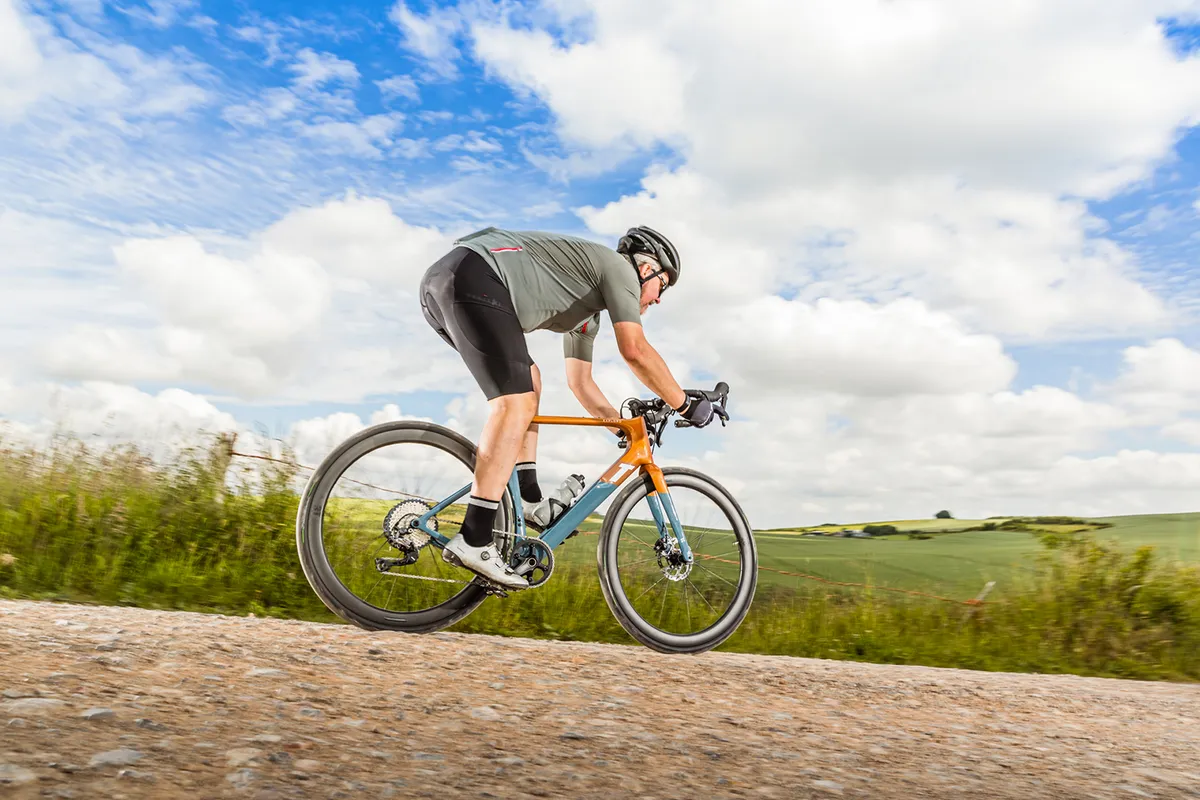
Gerard Vroomen, designer at the Italian bike company, has never been a man to conform. His first forays into cycling as one of the founders of Cervélo kickstarted the aero-road bike revolution, while his company Open Cycles also pushes boundaries.
Vroomen’s partnership with 3T has led to the radical 1x Strada road (2017) and the original Exploro back in 2016, which is widely regarded as the first aero gravel bike. In short, Vroomen’s an innovator. So does this disruptive DNA express itself in 3T’s RaceMax?
Yes, albeit in a subtler form, highlighting the importance of versatility and furthering aero credentials.
“Some thought the first Exploro was crazy, ‘An aero gravel bike?’” Vroomen recalls. “But if you’re riding on a gravel road across a plain slowly with a 50mph headwind then aerodynamics are as important to you as they are to a roadie in a time trial. Riding into 50mph means the resistance working on you is the equivalent of going fast, even if your ground speed is relatively slow.”
The RaceMax is available in six builds: three based around 700c wheels (Race) and three built on 650b wheels (Max), and are priced between £3,849 and £7,099. Here I’m testing the GRX 1x in Race trim with a carbon wheel upgrade at £5,599.
700c vs 650b
Recently you’ll have seen lot of references to 650b wheels on gravel bikes rather than the tradditional 700c found on road bikes.
The idea of a different wheel size is likely alien to a lot of road cyclists. The 650 size was originally a French invention designed for audax-style (light touring) machines and found popularity during time trialling’s ‘try anything’ heyday of the eighties and nineties – smaller front wheels were seen as a way to gain vital drag reductions.
650b or 27.5in wheels then became popular as an alternative wheel size for mountain bikes. Originally MTBs came with 26in wheels, but after the introduction of 29in wheels (the same as a road 700c but with a much wider rim) a middle ground to balance the rolling speed of 29in wheels and the strength and rough stuff abilities of 26in was sought.
A 700c wheel has a diameter of 622mm whereas 650b (also called a 27.5in wheel) has 584mm, but the overall diameters are closer when you consider a 700c wheel with a small tyre versus a 650b with a large tyre.
A 700c wheel is ideal for pretty much any road/cyclocross/gravel scenario – but if you want the extra-security of big volume tyres for reduced punctures, tyre tears and rim damage, and an arguably stronger wheel for when the terrain gets really tough, we’d suggest 650b is where you should be looking.
Three is the magic number

The RaceMax is all about versatility and according to 3T will appeal to three different types of rider.
The first is the racer who enjoys veering off the beaten track but also seeks on-road speed. It needs to be light and able to steer you into an aero position and possess the dynamics of a road bike but run on 28mm or 30mm tyres on 700c wheels, and either a 1x or 2x drivetrain.
Then comes the ‘gravel racer’ – a similar rider but the focus is off-road. They want a fast aerodynamic position and a light but tough build. These riders also like a 1x or 2x drivetrain and opt for 700c wheels but with a wider 35c or 40c tyre.
The last profile is what 3T calls the “max rider”. The counter-intuitive ethos here is ‘go slow to go faster’. This rider will use a wide-range 1x gearing and 650b wheels with maximum tyre size. They’ll stubbornly ride and refuse to walk. They know that if you walk a couple of miles in a 100-mile event that’s 20 minutes or more you’ll never get back, no matter how aero your bike is. The max set-up conserves energy while opening the RaceMax up to exploring and bikepacking.
Starting from the ground up
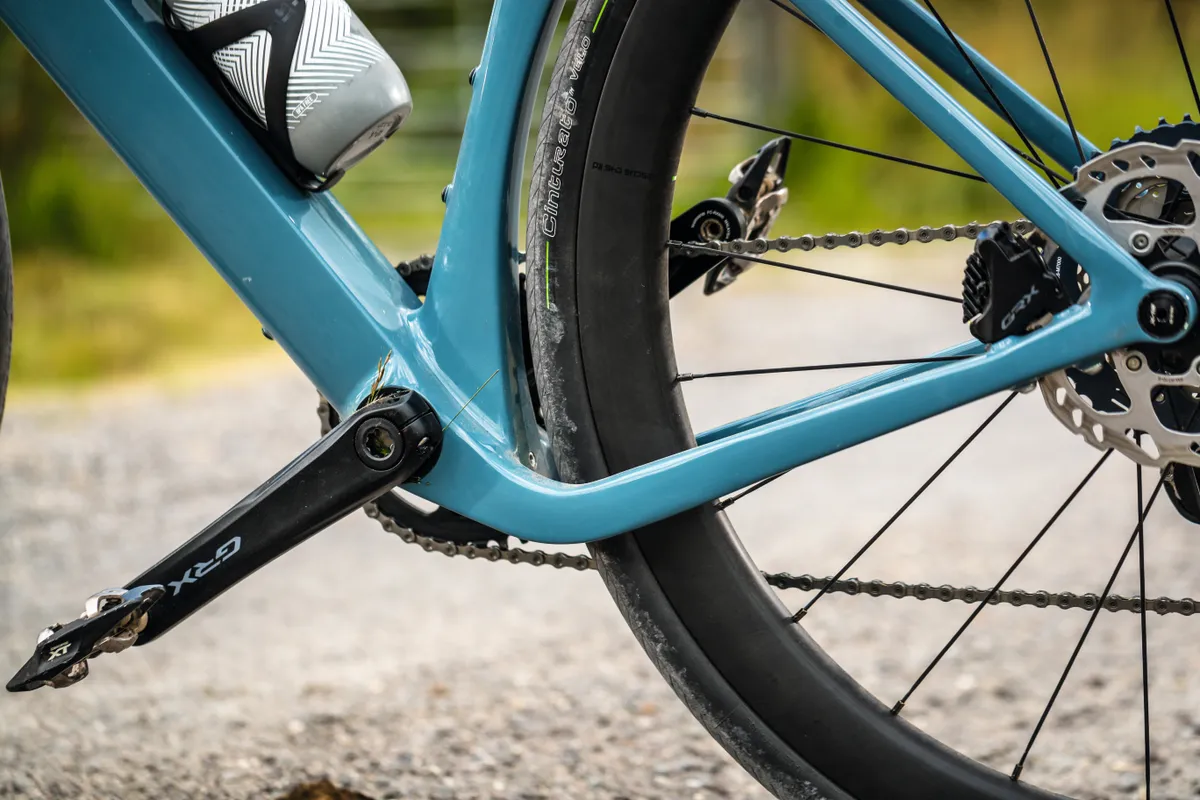
The design secret to being able to appeal to so many different types of riders, Vroomen explains, began with the tyre.
3T created two measures of tyre – RAM (radius as measured) and WAM (width as measured) – and by seeing how these measurements influenced rim width, tyre pressure and a tyre manufacturer’s definition when it comes to actual size compared to claimed, 3T was then able to begin design – we covered this in more detail in our news story back in June if you’d like to find out more.
The breadth of data from this research would, in turn, improve the bike’s aero efficiency plus key areas, such as the fork crown shape; the interaction between down tube and the back edge of the front wheel; and the aero cut-out in the seat tube that closely tracks even the most voluminous tyres.
Tyre size also impacts trail. The trail figure is a calculation that includes variables, such as the head-tube angle and the fork offset.
It measures the tyre’s contact point ‘trailing’ behind the steering axis. A small trail makes for a fast handling bike, while more trail slows down the steering response.
The radius of a wheel (3T’s RAM measurement) also affects the trail figure, so the RaceMax with a skinny 700c 25mm tyre for road use will elicit quicker steering than the same bike with larger 700c off-road gravel tyres, where the effective radius is greater and thus ‘relaxes’ the effective head angle of the bike.
By switching to a smaller wheel size (650b) with a larger tyre, the effective radius is very similar to that of a 700c set-up, so the RaceMax exhibits similar steering traits both on road and off.
3T Exploro RaceMax geometry and wheel dimensions
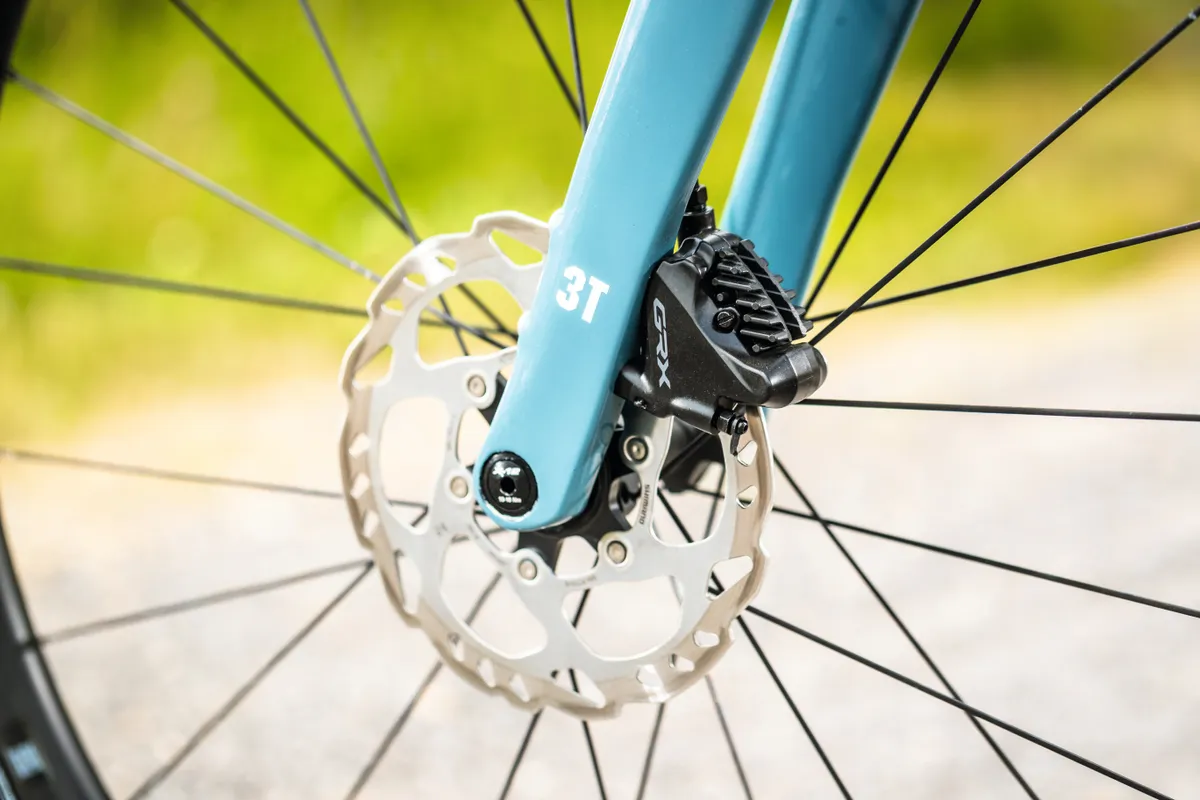
As always, the devil’s in the detail. Here it can be found on the double-dropped chainstays, which are designed to improve tyre clearance for both wheel sizes.
As previously explained, 3T doesn’t believe in stating tyre clearance based on tyre labelling because it feels it can be misleading – so I took it upon myself to measure up.
On my test bike, running 3T’s current Discus C45 Ltd wheels with their wide 25mm internal dimension and Pirelli’s Cinturato 35c tyres (measuring up at 35.5mm), I was left with 18.1mm clearance on each side, front and rear.
The top of the tyre to the fork crown came in at 8.6mm, while the rear tyre to the seatstay yoke measured 10.8mm. The legal ISO-required minimum standard for tyre clearance is 4mm, so it’s safe to say you could fit some seriously big rubber into the RaceMax should you wish.
Rather usefully, 3T features RAM and WAM reference tables on its website to help you choose the right tyres for your needs.
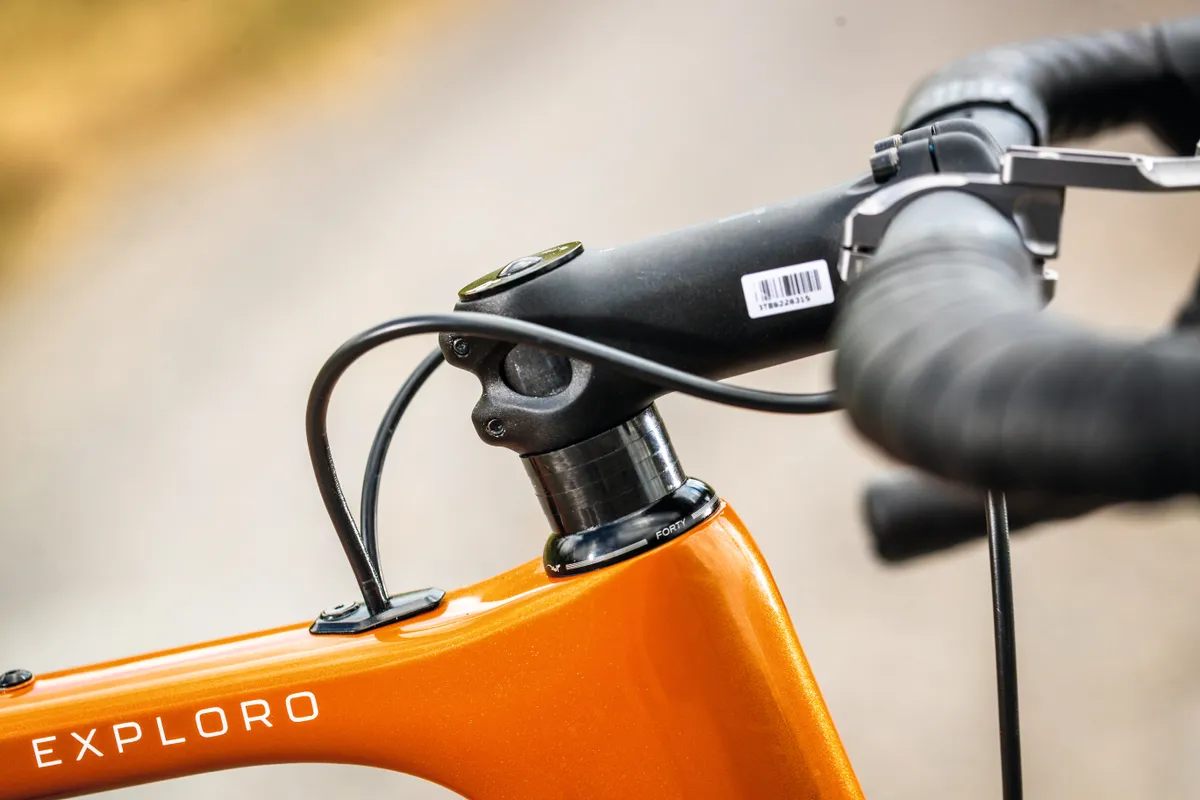
Turning my attention to the head tube, this is a clever piece of packaging when it comes to aerodynamics. The diameter’s the equivalent of a narrow 1¼-inch head tube that you’d see on a road bike for drag-cutting gains, but the RaceMax cleverly uses a 1½-inch wide steerer for improved strength and handling.
How’s this ingenuity achieved? By using custom bearings within the headset to reduce the overall size. Specifically, Vroomen tells us, it’s utilised small ball bearings, but over 50 per race (the cage that holds the bearings) instead of the norm, which is around 24.
The number of bearings provides the same smoothness, strength and resistance to forces as larger bearings but in a smaller package, therefore, you can make the front end smaller and more aero while still having internal cable routing.

The down tube also has aero at its core. The top third of the tube is 46mm wide and sculpted to optimise airflow from the front wheel, which shields up to a 40mm (actual size) tyre. This swells to 75mm wide, which completely shields a bottle cage and bottle from air resistance (as Vroomen points out, no-one rides gravel without at least one water bottle).
The depth of the down tube is proportional, to equalise the ride feel whatever the height of rider. 3T’s also included a variable bottom bracket (BB) drop per size to equalise pedal-to-ground clearance across the board, rather than BB shell clearance.
The bike also comes with plenty of fittings: three water bottle mounts, a top-tube bento-box mount and mudguard mounts front and rear.
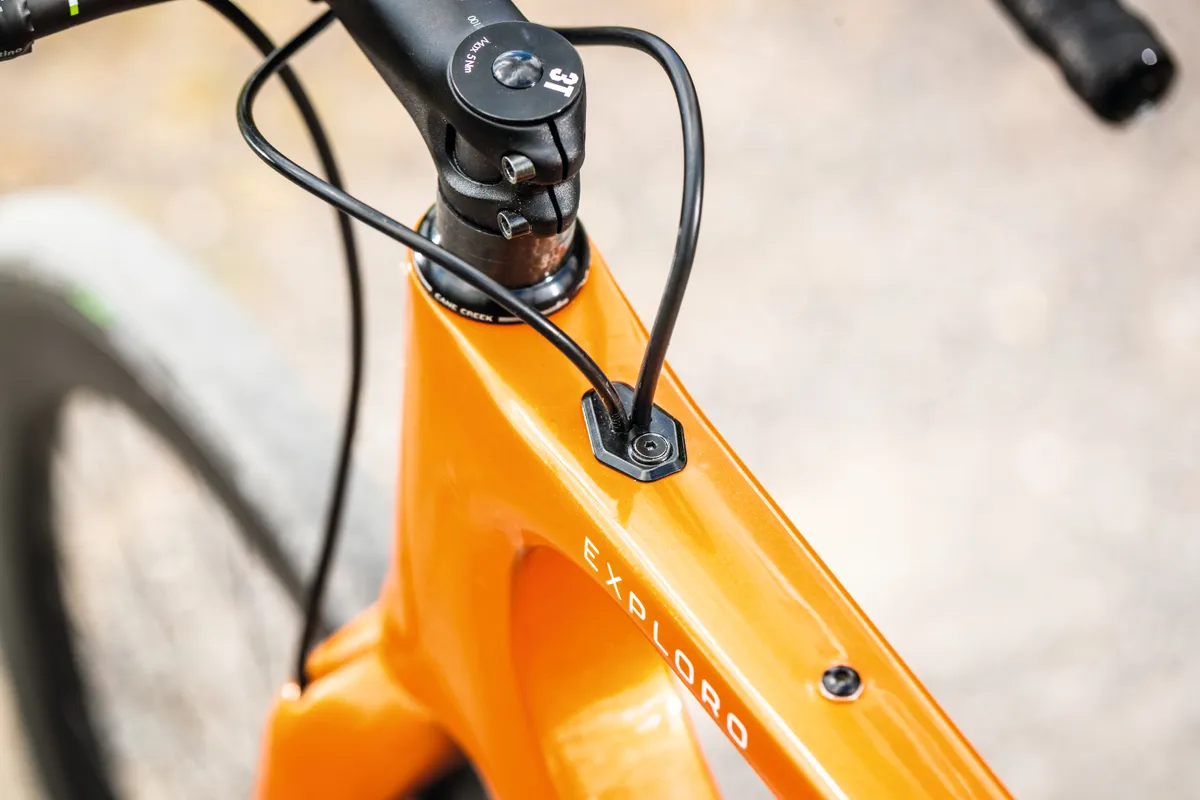
The rear dropouts are standard and direct-mount rear-mech compatible. The disc-caliper flat-mounts are minimal because they’re designed around 160mm rotors, and the brakes are truly direct-mount with no clumsy adaptors front or rear.
The carbon aero seatpost uses Ritchey’s easy-mounting and adjustable saddle clamp. The fork is an all-new design, albeit it follows the same cues as the road-hungry 3T Strada fork, thanks to a minimalist crown and identical crown-to-axle distance (370mm).
The fork’s profile is also aero-optimised with variable shaping to proficiently work in sync with the front wheel and the force that it generates. The fork also comes in two offsets – 54mm and 62mm – per size (smaller for smaller frames).
| | XXS | 51 | 54 | 56 | 58 | 61 |
|---|---|---|---|---|---|---|
| Seat angle (degrees) | 74.5 | 74 | 73.5 | 73 | 72.5 | 72.5 |
| Head angle (degrees) | 69 | 69.5 | 71 | 72 | 72 | 72 |
| Chainstay (cm) | 41.5 | 41.5 | 41.5 | 41.5 | 41.5 | 41.5 |
| Seat tube (cm) | 43.6 | 46.3 | 49 | 51.8 | 54.5 | 57.2 |
| Top tube (cm) | 50.6 | 52.6 | 54.6 | 56.6 | 58.6 | 60.6 |
| Bottom bracket drop (cm) | 7.9 | 7.9 | 7.7 | 7.7 | 7.5 | 7.5 |
| Wheelbase (mm) | 998 | 1,008 | 1,008 | 1,014 | 1,024 | 1,044 |
| Stack (cm) | 52 | 54.2 | 56.4 | 58.4 | 60.4 | 63.2 |
| Reach (cm) | 35.5 | 36.6 | 37.7 | 38.5 | 39.3 | 40.4 |
3T Exploro RaceMax ride impressions
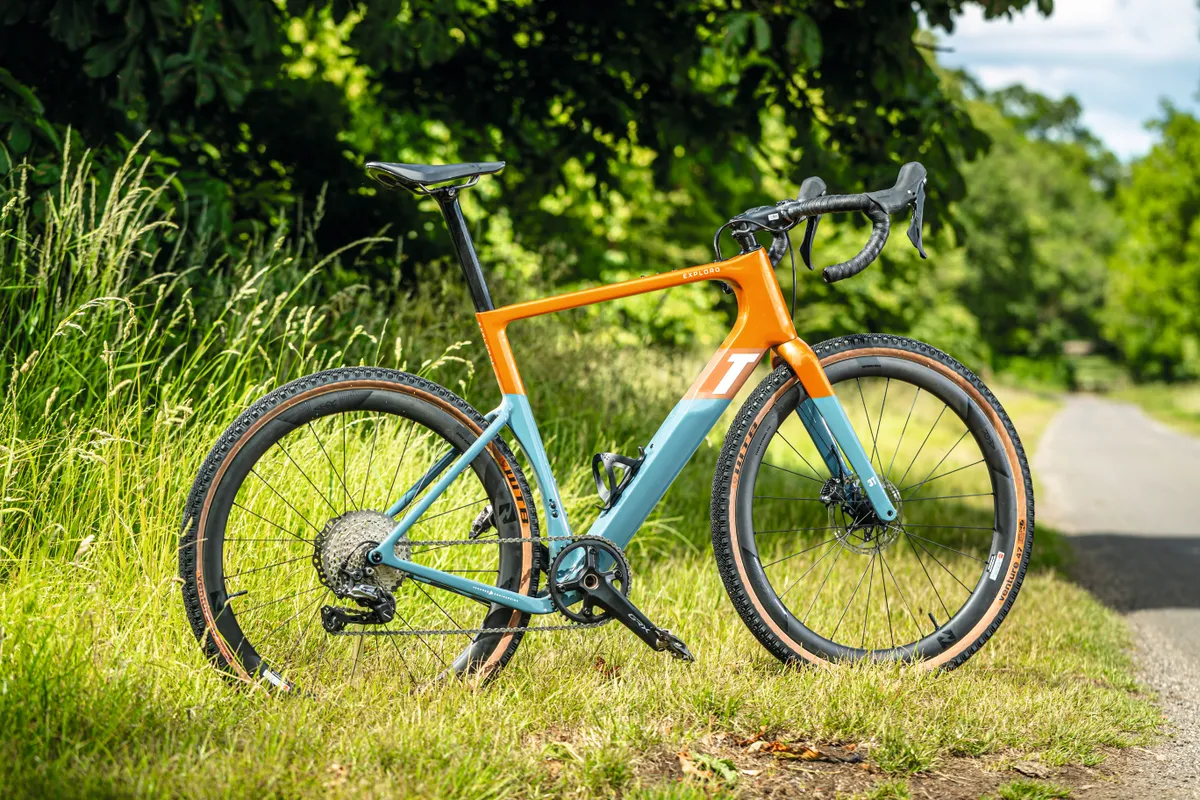
My test bike came equipped with a mixed selection of Shimano’s GRX gravel-specific mechanical components in a single-ring set-up, giving a gear spread of a 40t chainring and a wide 11-42 cassette.
As you’d expect, 3T provides the lion’s share of the components, all finished off with a pair of 3T’s current Discus C45 carbon wheels. The full production bike will come with a WTB Serra wheelset as standard, or an upgrade of the new Discus 40/45 Ltds, which employ a wider carbon rim than the current C45s fitted.
The RaceMax, rolling on Pirelli’s Cinturato 35c tyres, which measure up at 35.5mm on the 19mm-wide 3T wheels, feel every inch a rapid road bike. Moving to bigger-volume tyres on the road means much more comfort. Of course, this luxury normally comes at the expense of out-and-out pace. But that just doesn’t materialise.
The only reminder that you’re on a bike capable of so much more than traversing tarmac is the single-ring drivetrain (3T offer lots of 2x options in the RaceMax range, too). In fact, the ride position and the smoothness of which you can build up and hold speed reminded me very much of 3T’s Strada or classic Cervélo aero bikes, such as the S3. It’s the RaceMax’s stiffness through the drivetrain that makes it feel every inch a racing chassis.

The combination of speed and stability in the handling is wonderfully balanced; in fact, the RaceMax is such a capable on-tarmac machine that I’d have no problem riding this in the midst of a chaingang of out-and-out road race bikes.
That single-ring set-up could be limiting at higher speeds, but a 40/11 combination gives a 99-inch gear, which is a little taller than 50/14 (97 inches) when both are running a 700c wheel and 35c tyre.
It’s not all about its road credentials, of course, so when running the 35c tyres, I took in the occasional diversion onto gravel and dirt roads. Again, the RaceMax performed superbly, those Pirelli tyres holding up well on rough surfaces, making this a great bike for the occasional shortcut or cut-through to link up roads.

Putting the RaceMax’s claim of versatility to the test, I switched in a set of 650b wheels (Shimano GRX 650b) and took the RaceMax truly off the beaten track.
It handles the rough stuff well; any stiffness and rigidity through the chassis is offset nicely by the larger-volume tyres afforded by reducing the wheel diameter. The chassis’ race-bike stiffness means it can’t match an out-and-out gravel bike, such as GT’s Grade, Cannondale’s Topstone or Specialized’s Diverge when it comes to rough-terrain compliance, but compared to its closest rival – Rondo’s equally versatile HVRT (our 2019 Bike of the Year) – it’s very similar.
Both mix a racing persona with all-road capability. The larger-volume tyres do slow the handling a little, which isn’t a bad thing when riding rutted, challenging surfaces, and the RaceMax tracks as well as any racy, dedicated gravel bike I’ve tried.
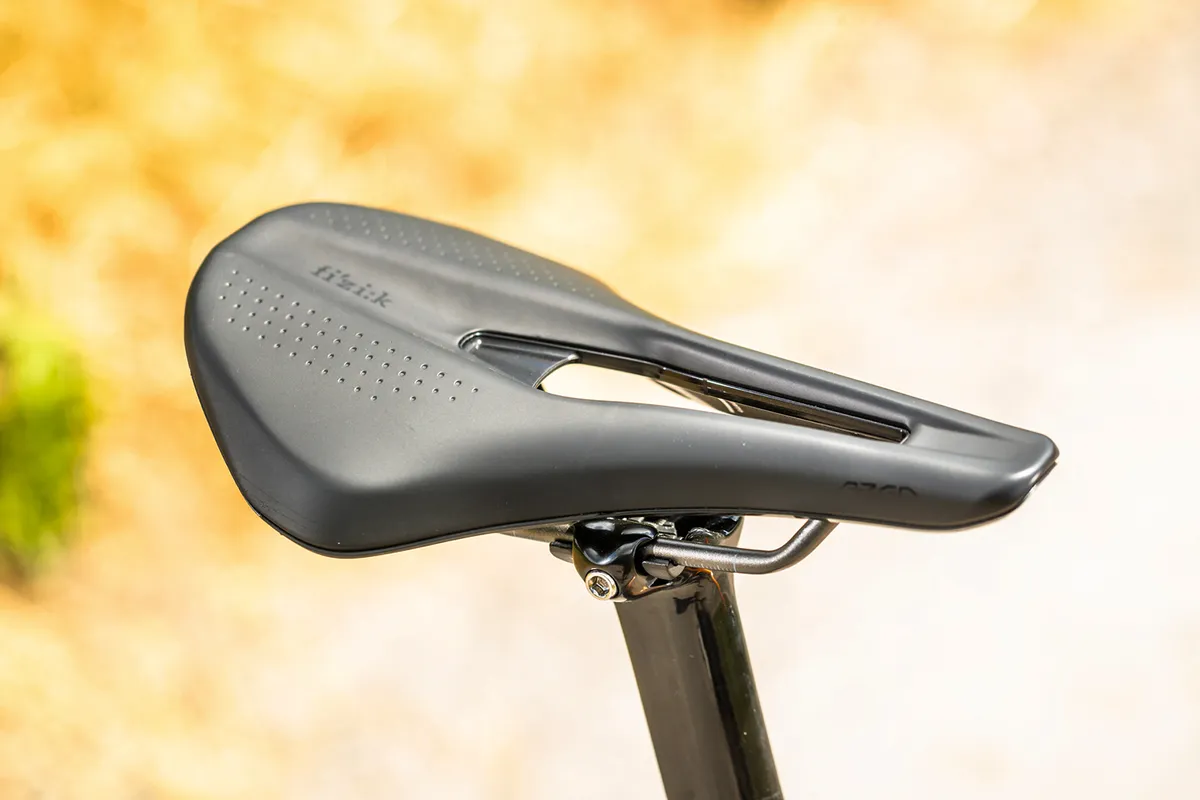
Build-wise 3T has done a great job. The cockpit is superb with a sleek ergo shape to the bar; both bar and stem ooze quality when it comes to the finish.
The Exploro carbon seatpost offers a bit of flex in the rough and it’s topped off with Fizik’s excellent new short-saddle design, the Tempo Argo.
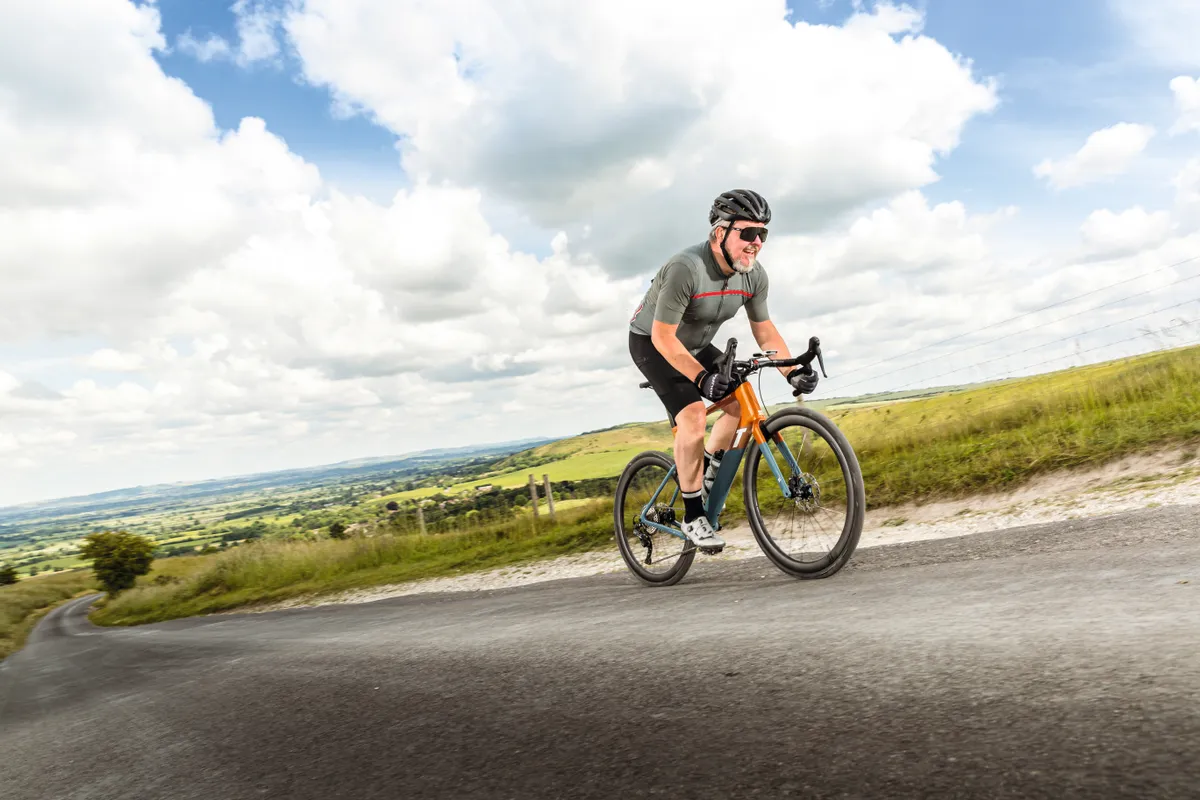
As mentioned earlier, the Discus carbon wheels as specced here will be replaced by the new, wider carbon units as an upgrade (£5,599), whereas the standard build will receive alloy wheels from WTB (£3,849).
The GRX group mixes what is the equivalent of 105 and Ultegra level components in its drivetrain and it all works beautifully together. The brakes are full of feel and packed with power, and the use of 160mm rotors means noise is kept to a minimum, even when running them hot on long descents.
3T Exploro RaceMax bottom line
As for overall value, the RaceMax Exploro is hard to quantify because it has so few rivals beyond Rondo’s HVRT (the 105-equipped HVRT CF2 is priced at £2,699). However, the HVRT’s tyre size is limited to 30c in 700s and 47c in 650b, and the RaceMax can go way beyond both of those measures.
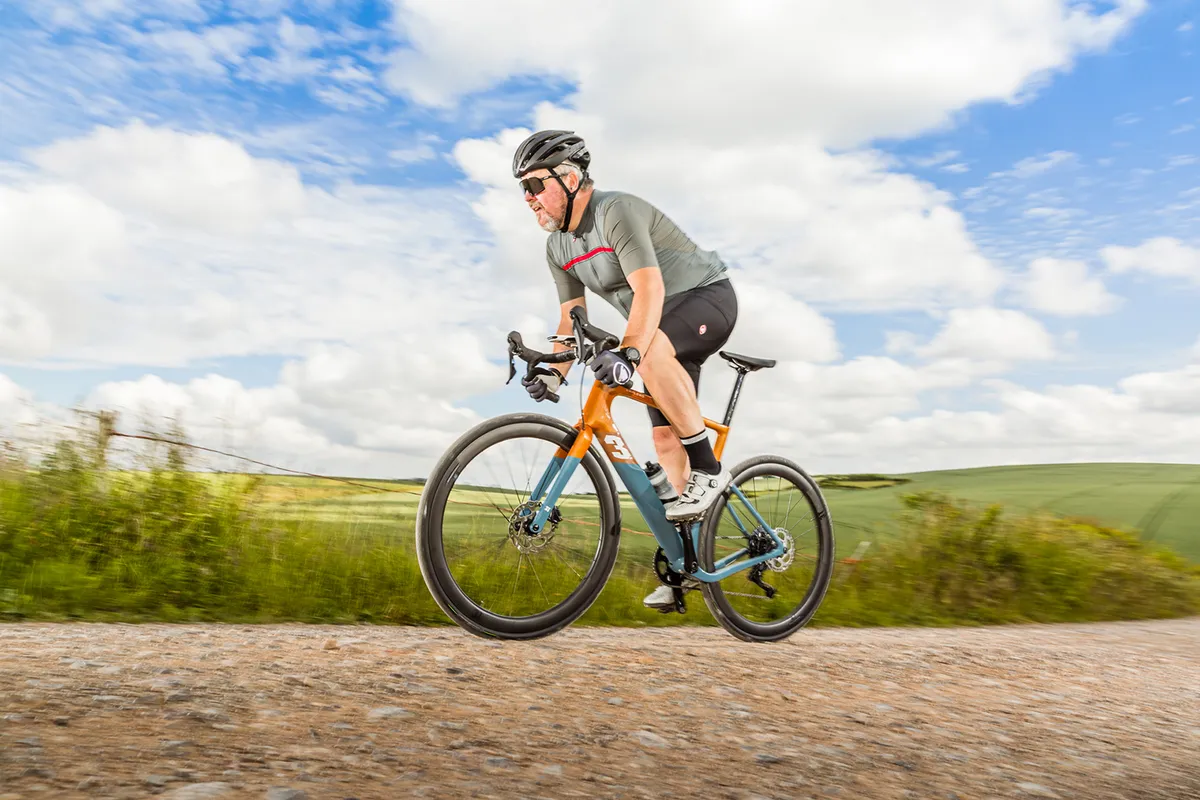
Versatile gravel bikes like Cannondale’s Topstone carbon with Force AXS and carbon wheels is a little more at £4,800, or somewhat less with Ultegra RX and carbon wheels for £3,500.
Or you could opt for road bikes capable of a bit more rough-stuff like Cervélo’s new Caledonia (£4,199 with Ultegra Di2) or Specialized’s Roubaix (£3,500 with Ultegra).
The 3T RaceMax is a pricey machine but it’s the most versatile race-ready bike out there, so if you put it in the context of a one-bike-for-all – an N-1, if you will – then the premium price justifies itself easily.
Now, if 3T would offer one build with two wheel sizes included then it would truly be the only bike I’d ever need.
Product
| Brand | 3t |
| Price | 3849.00 GBP |
| Weight | 8.7200, KILOGRAM (58cm) - |
Features
| Fork | Carbon |
| br_stem | 3T Apto team stealth |
| br_frame | Carbon |
| Tyres | Pirelli |
| br_brakes | Shimano GRX 400 |
| br_cranks | Shimano GRX 600 |
| br_saddle | FiZik Tempo Argo R5 |
| br_wheels | 3T discus C45 LTD |
| br_shifter | Shimano GRX |
| br_cassette | M400 |
| br_seatpost | Exploro aero carbon |
| br_handlebar | 3T Superleggera Ltd 44cm |
| br_availableSizes | XXS, 51, 54, 56, 58, 61cm |
| br_rearDerailleur | Shimano GRX 812 |
| Features | Extra: 3T Matte carbon bottle cage |
